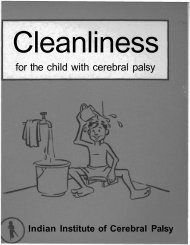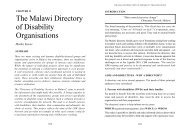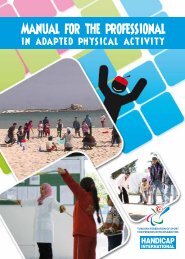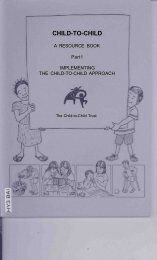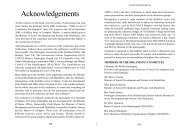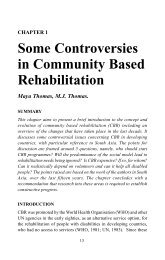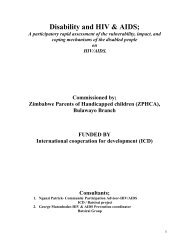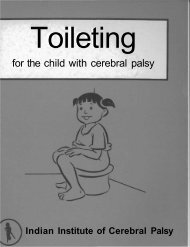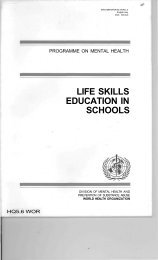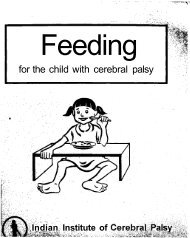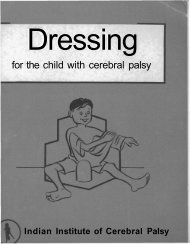CBR AS PART OF COMMUNITY DEVELOPMENT - Source
CBR AS PART OF COMMUNITY DEVELOPMENT - Source
CBR AS PART OF COMMUNITY DEVELOPMENT - Source
Create successful ePaper yourself
Turn your PDF publications into a flip-book with our unique Google optimized e-Paper software.
approach; strengthening the duty bearers on the one hand and the rights<br />
holders on the other; aims to strengthen their respective roles,<br />
responsibilities and performance in the society, as well as the<br />
communication and interaction between the two. It is therefore not a<br />
coincidence that NAD has supported the two CAN conferences in<br />
Uganda and Malawi, since our organisation also supports their two<br />
governments in developing national community based rehabilitation<br />
programmes.<br />
A prerequisite for NAD's support to these conferences has been that all<br />
the presentations, deliberations and discussions during the workshops<br />
should be captured and translated into a book to be shared with a wider<br />
audience. We do therefore sincerely hope that this book will be widely<br />
distributed and read by senior government officials, NGO managers and<br />
community development workers. Most importantly we hope that it will<br />
trigger the interest of disabled persons' organisations and encourage<br />
them to take an active role in the planning and implementation of<br />
community based rehabilitation programmes throughout the African<br />
continent.<br />
Lars 0degard<br />
Secretary General The Norwegian Association of<br />
Disabled - NAD<br />
FOREWORD<br />
FROM ICH, U.K.<br />
It is a great pleasure to be invited to provide the foreword for this book<br />
which provides clear statements as to how <strong>CBR</strong> must be seen as part of<br />
other mainstream services and activities and can no longer be viewed as<br />
an as add-on service only if there is a budget available. The book<br />
demonstrates how far <strong>CBR</strong> AFRICA NETWORK (CAN) has progressed<br />
over the past 4 years, Shaya Asindua in the first chapter outlines the growth<br />
of CAN and is proud to acknowledge its role in promoting the largely<br />
African authorship of the majority of the chapters in this book. It shows<br />
that practitioners from throughout the African continent are now able to<br />
share their experiences with readers throughout the world.<br />
The book extends some of the papers given at the conference and<br />
addresses not only of how <strong>CBR</strong> should be, but also gives examples of<br />
how <strong>CBR</strong> can be integrated into different services including health,<br />
economic, education, social and cultural sectors. Peter Coleridge in the<br />
second chapter addresses the issue of how <strong>CBR</strong> can address the all<br />
important issue of poverty reduction for persons with disability and their<br />
families. In this chapter he gives a thoughtful overview of factors, which<br />
have inhibited the economic progress of persons with disability and<br />
challenges the World Bank's view in 1999 (before the appointment of<br />
Judy Heuman) that persons with disability are economically inactive.<br />
There then follow four interesting chapters illustrating how <strong>CBR</strong> can be<br />
integrated into first social cultural and political development, secondly<br />
into the economic development of a community, thirdly into community<br />
health development and finally how <strong>CBR</strong> should be perceived as part of<br />
the inclusive education movement.<br />
The under recognised issue of the impact of the HIV/AIDS pandemic<br />
upon persons with disability and the way in which the (relatively) new<br />
ICF classification system from WHO can be used to assist <strong>CBR</strong> activities



